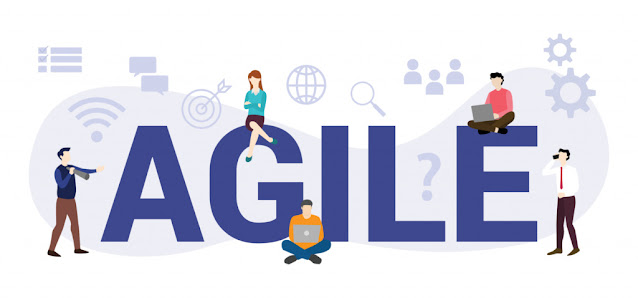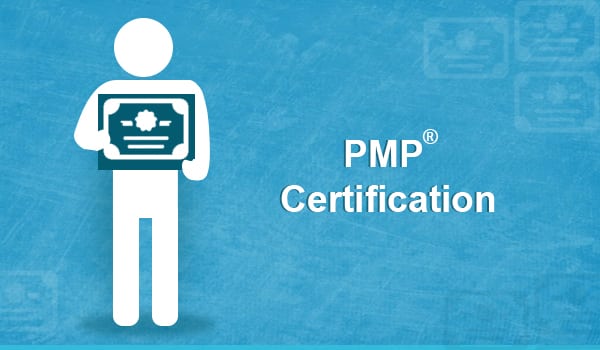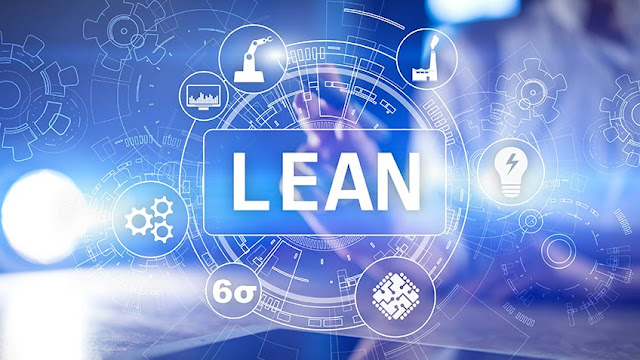The year 2020 has taught numerous things to the entire world and from the career perspectives, the importance of upskilling yourself has also surged in this particular period. People now have realized that to sustain in this rapidly growing tech world, you’re constantly required to improve your skillset and boost your credibility to uplift your career graph.
And the one-stop solution for this concern is CERTIFICATIONS!
Yes, you heard it right! It has been observed that candidates possessing relevant and valuable certifications are likely to get more job opportunities and significantly better salary packages (even in a pandemic situation). As per the reports of Global Knowledge, 87% of IT professionals acquire at least one certification, and earning a certification can result in a raise upwards of $12,000 a year (Isn’t it something exciting?). Certifications help you in numerous ways such as validate your skill & knowledge, provide you the expertise in a particular domain, boost your chances of getting better career opportunities, and many more.
Also, in the present-day scenario, when there are numerous standard organizations and platforms that are providing you the facility of remote learning and you can achieve a certification right from your home – then what’s holding you back from upskilling yourself and earning a worthwhile certification?
However, before opting for any certification, you need to identify several aspects such as if the particular certification is relevant to your career goals and worth it for your time and money, etc. Here, in this article, we’ll let you know about several most recommended IT Certifications along with the certification domain, price, and other details to make it easier for you.
Let’s get started with these top 10 highest paying IT Certifications that can surely help you to grow your career in 2021:
1. Google Certified Professional Cloud Architect
Domain: Cloud
About the Certification: The Google Professional Cloud Architect Certification is among one of the top-paying certifications in the industry. A Google Certified Professional Cloud Architect is quite proficient with Google Cloud technologies and is able to design, develop, and manage scalable and secure cloud solutions. This certification exam assesses your skills and knowledge for designing & planning a cloud solution architecture, security & compliance, managing the implementation of cloud architecture, ensuring solution & operations reliability, and other related areas.
Exam Details: Firstly, there are not any specific prerequisites for the Google Certified Professional Cloud Architect exam but you’re recommended to possess at least three years of industry experience with 1 year particularly for managing and handling Google Cloud Technologies. Moreover, the exam is of duration – 120 minutes and consists of multiple-choice questions. Also, the exam can be taken by you in English or Japanese language and in online or offline mode as per your convenience.
Cost: USD 200 + applicable tax
Other Certifications that can be considered in this domain: AWS Certified Solutions Architect and Microsoft Certified Azure Solutions Architect.
2. Certified Information Systems Security Professional (CISSP)
Domain: CyberSecurity
About the Certification: The Certified Information Systems Security Professional (CISSP) certification is unbeatable when it comes to accelerating your career in the cybersecurity field. The certification is provided by the International Information System Security Certification Consortium (ISC)² and is strongly recommended to cybersecurity professionals such as Security Analyst, Security Systems Engineer, Network Architect, Security Consultant, etc. Moreover, the CISSP certification exam assesses your expertise in 8 distinct areas – Security and Risk Management, Security Architecture and Engineering, Identity and Access Management (IAM), and several others.
Exam Details: The exam will be held in the Computer Adaptive Test (CAT) format in the English language. It will be consisting of nearly 100-150 questions in a multiple-choice format, and you need to solve the paper within a duration of 3 hours. Furthermore, you have to score 700 out of 1000 points for passing grades. Also, you need to have at least 5 years of paid work experience in 2 or more of the eight domains of the CISSP CBK.
Cost: USD 699
3. Exam AZ-400: Designing and Implementing Microsoft DevOps Solutions
Domain: DevOps
About the Certification: Microsoft offers this prominent certification for individuals who want to validate their skills in the DevOps domain. This certification exam assesses your skills and knowledge related to the particular tasks – developing instrumentation & Site Reliability Engineering strategy, security and compliance plan, source control management, continuous integration & continuous delivery implementation, and other related tasks. Also, this certification acts as the prerequisite for Microsoft Certified: DevOps Engineer Expert certification.
Exam Details: It is an intermediate level exam and an individual is required to be familiar with Azure administration and development with having expertise in any one of these two areas to appear for this exam. There will be around 40-60 questions in the exam that need to be solved within a duration of 210 minutes. You can prepare for this certification with the standard learning resources provided by Microsoft on their official website.
Cost: INR 4800
4. ITIL Foundation
Domain: IT Service Management
About the Certification: ITIL, Information Technology Infrastructure Library, is the most extensively accepted framework for IT service management across the world. It is basically a set of practices for IT Service Management that focuses on the link between IT services and business needs. The ITIL Foundation certifications help you to validate your understanding & knowledge of the ITIL framework and Service Management. This certificate is recommended to working professionals as well as beginners who require a fundamental knowledge of the ITIL framework and how it can be used to enhance IT service management.
Exam Details: There is not any specific prerequisite required to appear for the ITIL Foundation exam. However, this foundation level is mandatory for other higher-level ITIL certifications. There will be around 40 questions in the exam that you would need to solve within a duration of 60 minutes. The exam will be based on multiple-choice questions format and you need to score at least 26 marks out of 40 to pass the exam.
Cost: INR 15000-17000 (In India)
Read More: ITIL Certification
5. Certified Information Security Manager (CISM)
Domain: CyberSecurity / Information Security
About the Certification: The Certified Information Security Manager (CISM) certification is offered by the renowned global association, ISACA to recognize your expertise in Information Security Governance, Risk Management, Information Security Program Development & Management, and Information Security Incident Management areas. It allows you to shape up your career from the technical domain to management. The CISM certification is widely accepted across the world and can help you to land some remarkable career opportunities in the information security management field.
Exam Details: The CISM exam can be taken through an online method or onsite in-person method as per your convenience. The eligibility will be ensured at the time of registration and will valid for twelve months. The exam will consist of 150 multiple choice questions and the duration of the exam will be of 4 hours. Also, you need to score at least 450 out of 800 to pass the Certified Information Security Manager (CISM) certification exam.
Cost: USD 575 for ISACA members and USD 760 for non-members.
6. Project Management Professional (PMP)
Domain: Project Management
About the Certification: A proficient Project Manager is always in great demand in the industry and so is this Project Management Professional certification. This certification is administered by the Project Management Institute and it demonstrates the abilities of an individual for defining, planning, and delivering the projects efficiently and successfully. You’re required to have 35 hours of PMP-related training along with a four-year degree program and 3 years of experience in leading projects for this certification. In case, if you’re not having a bachelor’s degree, you need to have 5 years of experience in leading projects.
Exam Details: There are several changes in the PMP Certification exam w.e.f. January 02, 2021 – so let’s take a look at the updated details. There will be 180 questions in the exam and the exam duration will be of around 230 minutes. The questions will be based on multiple formats such as multiple-choice, multiple responses, matching, hotspot, and limited fill-in-the-blank. Moreover, there will be 1 additional break for a total of two 10-minute breaks.
Cost: USD 405 for members of PMI and USD 555 for Non-members.
7. CCNP Enterprise
Domain: Networking
About the Certification: The CCNP Enterprise certification offered by CISCO is the replacement to the renowned CCNP Routing and Switching certification that demonstrates your skills with enterprise networking solutions. To achieve this CCNP Enterprise certification, you need to clear two exams – a core exam and an enterprise concentration exam as per your preference. The core exam is concerned with the knowledge of implementing & operating Cisco Enterprise Network Core Technologies whereas Concentration exams are concerned with various industry-specific areas such as network design, wireless, SD-WAN, automation. Moreover, the CCNP Enterprise certification is valid for 3 years and it can be recertified as well.
Exam Details: Firstly, you need to know that there are not any specific prerequisites required for this certification but you’re recommended to have 3-5 years of experience implementing enterprise networking solutions and sound knowledge of all the concepts relevant to the exam. And you can appear for the exam through the online mode.
Cost: Core Exam – USD 400 and Concentration Exam – USD 300.
8. VMware Certified Professional 6 – Data Center Virtualization (VCP6-DCV)
Domain: VMware Certification / Data Center Virtualization
About the Certification: The VMware Certified Professional 6 – Data Center Virtualization certification validates your skills and knowledge for administration, implementation, management, and troubleshooting vSphere V6 infrastructures. In case, if you are new to VMware Data Center Virtualization technology, you’re required to gain at least 6 months of experience with vSphere 6, attend required VMware vSphere training courses, pass the vSphere 6 or vSphere 6.5 foundations exam, and then pass this VMware Certified Professional 6 – Data Center Virtualization Exam. Also, if you’re already having this certification, you still can opt to upgrade it to the next version.
Exam Details: There will be a single exam based on the multiple-choice question format. The exam will consist of around 65 questions that you need to solve within a duration of 100 minutes. Also, you need to score at least 300 out of the total marks to pass this exam. The exam can be taken in English or Japanese language in a proctored exam format.
Cost: USD 250
9. AWS Certified Cloud Practitioner
Domain: Cloud
About the Certification: The Amazon Web Services Certified Cloud Practitioner certification is the foundational level exam that is designed for individuals who are possessing an adequate understanding of the AWS Cloud platform. The certification is very much preferred, especially in the cloud industry and it also acts as a prerequisite for other Associate and Professional level AWS Certifications. This AWS certification focuses on assessing your knowledge about basic global infrastructure, architectural principles, value proposition, basic security & compliance, pricing models, etc. To earn this certification, you all are recommended to have at least 6 industry months of experience with the AWS Cloud.
Exam Details: There will be a multiple-choice exam and you’ll be provided with 90 minutes to complete the exam. The exam can be taken in English, Korean, Japanese, Korean, and Simplified Chinese language in any one of the online exam or onsite exam mode. Also, you can get various learning resources such as training courses, practice papers, etc. on the official website of AWS to prepare for the exam.
Cost: USD 100
10. Certified in Risk and Information Systems Control (CRISC)
Domain: CyberSecurity
About the Certification: The Certified in Risk and Information Systems Control (CRISC) certification, offered by ISACA, demonstrate your abilities for identifying and managing enterprise IT risk and implementation and maintenance of information systems controls. The certification mainly deals in 4 areas – IT Risk Identification, IT Risk Assessment, Risk Response, and Mitigation and Risk Control, Monitoring & Reporting. You are recommended to have at least 3 years of experience in IT risk management and Information Security control before opting for this certification exam. This certification is very much suitable for mid-career professionals from the information security and enterprise risk management & control field.
Exam Details: The CRISC certification exam can be taken via an online remote proctored method or at an in-person testing center, as per your convenience. The exam will consist of 150 multiple choice questions with an overall duration of 4 hours to complete. You can take the exam in English, Spanish, or Simplified Chinese language.
Cost: USD 575 for ISACA members and USD 760 for non-members.
So, these are several prominent certifications that you can consider in the year 2021 as per your requirements. For instance, if you’ve just started with the Cloud technology, you can opt for AWS Certified Cloud Practitioner or if you’re having some experience in the cloud, you can go with Google Certified Professional Cloud Architect or Microsoft Certified Azure Solutions Architect. Similarly, if you want to make it big in the networking domain, you can consider CCNP Enterprise and so on..!!
Source: geeksforgeeks.org




































